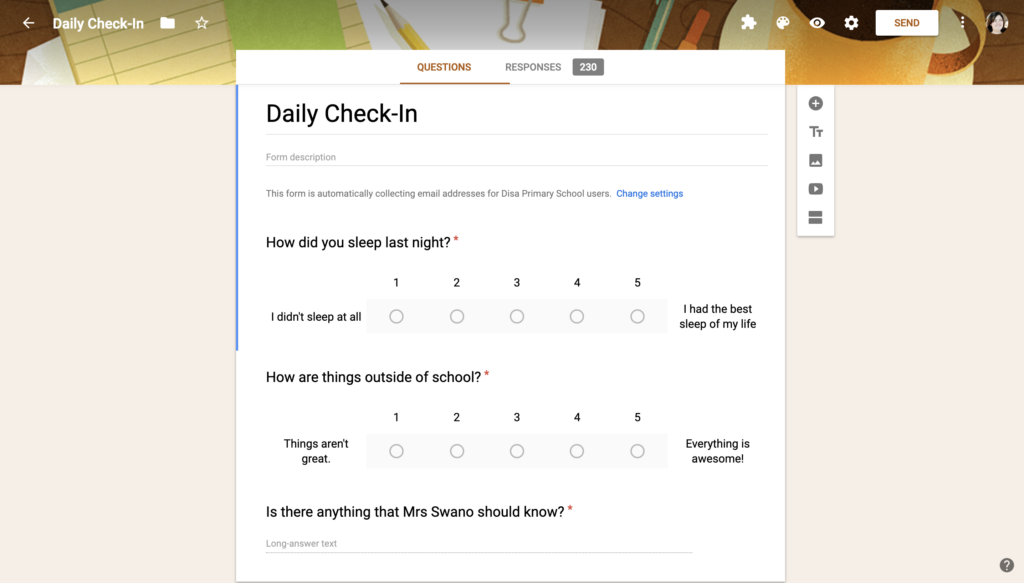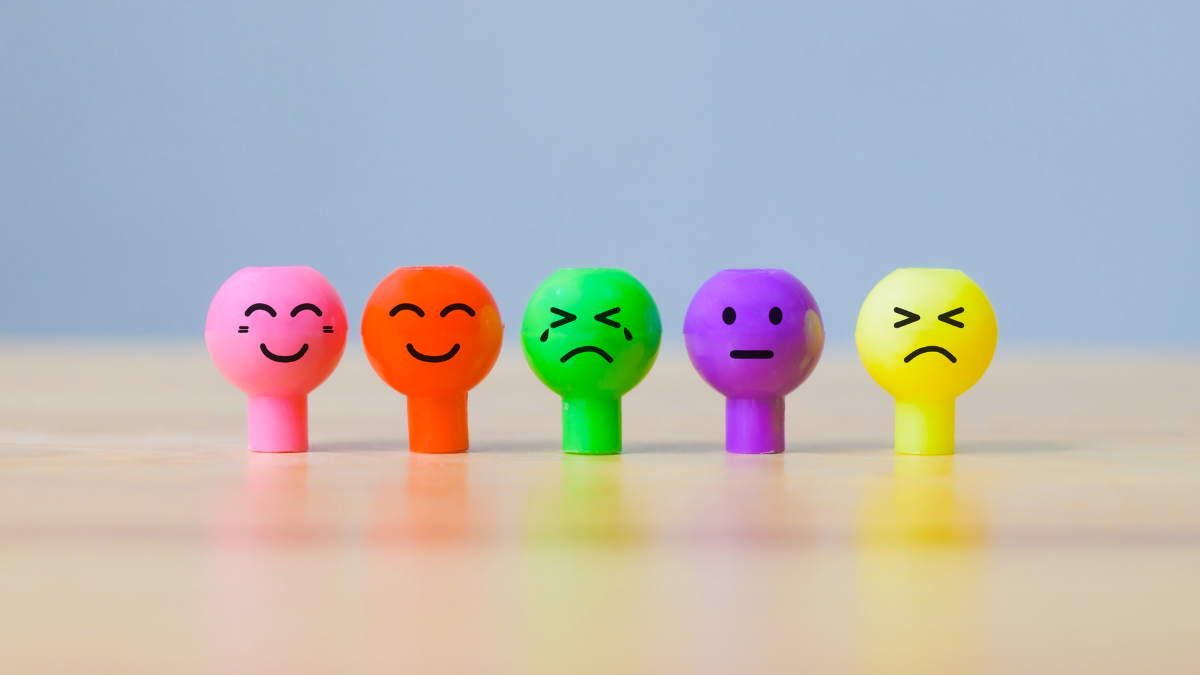Relationships form the foundation of everything that we do as teachers, whether it be with colleagues, management or the learners in our class. There is little doubt that teaching is a people profession.
Having positive and supportive personal relationships with our learners goes a long way towards improving learner achievement. According to Sara Rimm-Kaufman and Lia Sandilos (PhD, University of Virginia), when a student feels a strong personal connection to their teacher, they are “likely to trust [their] teacher more, show more engagement in learning, behave better in class and achieve at higher levels academically.” Having a good relationship with your class can inspire them to want to learn. And, let’s be honest, it can make your life a whole lot easier!
One strategy that I have used in my class to help build relationships with my learners is the Daily Check-In.
Each morning, my learners open up Google Classroom (which is readily available on any device that can connect to the internet- including learners’ cell phones) and there they find the link to the Daily Check-In questionnaire.
This is a simple set of questions that takes two minutes for the learners to answer individually, but that give me a lot of valuable information as a teacher. There are three basic questions: 1) How did you sleep last night on a scale of 1 to 5? 2) How are things outside of school on a scale of 1 to 5? 3) Is there anything that I should know?
Once learners answer these questions, I can see their responses in a spreadsheet as an overview of the class. Some quick conditional formatting means that any low scores are automatically coloured in red and flagged for my attention. I can also see the responses to the last question at a glance and see if there is anything that I need to address to urgently. Most learners say that there is nothing wrong or they leave me a personal message., but sometimes, there are also learners who raise concerns that they may be too shy to bring directly to me or may simply not have the time to bring up at the beginning of the day.
Once the class is busy with their first activity for the day, I have a good look at the responses and decide whether I need to call anyone aside for a quick, personal chat. For example, in the screenshot, I would call the learner who is being bullied and investigate further. I may also call learners who gave a rating of one or two for one of the questions, especially if it is becoming a pattern. I would also check in with the learner who has a sore tummy and see if there is something that we can do about that or whether they would be better off at home, resting.
Since implementing the Daily-Check In, I have seen a marked improvement in the relationship with my class. I am able to identify potential causes of concern or tension right at the beginning of the day and address them before they become “blow-ups” later. It is also a calm start to the day because I am not bombarded the second I walk in the door with “Teacher! Teacher! Johnny took my pencil without asking,” and little Johnny standing next to him denying it vehemently, as my class know that they have a platform to tell me their concerns or frustrations.
It has meant that I can connect with the quiet learners who have something that they would like to share, but do not want to do so in front of an audience. I can also converse with the loud and boisterous ones who want to tell me everything precisely because they have an audience.
Google Classroom also has the ability to send private messages to your learners. Some children prefer to communicate via text and will have long conversations with me about important concerns that they have that may not have happened if the “faceless” option were not available to them.
I’ve used the same concept, with different questions, to check in with learners on how they are finding a new concept that we’re covering in class or whether they have suggestions on how we could do things differently. The impact on my teaching has been remarkable.

Children, in fact, people, want to be heard and when we provide a platform for this, magical things can happen in your relationships.

If you’re new to Google Classroom and would like some guidance on how to get started, you can check out this YouTube video: http://bit.ly/2XSZuqN
If you’d like to learn more about setting up a Google Form, you can have a look at the Google Learning Center: http://bit.ly/2XRIEZc
By Jenna Swano
This article first appeared in the Teacha! Magazine. Read or download it here.



